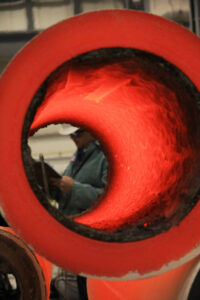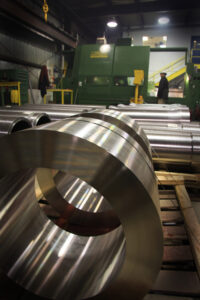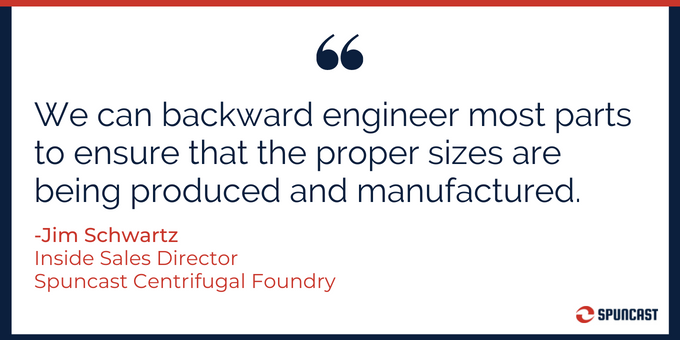In an industry increasingly defined by technology and automation, clear communication from your foundry is a soft skill that’s often overlooked. But both effective and ineffective communication will have an enormous impact on your part’s production and the price you ultimately pay.
“Without good communication between the customer and the foundry, an uneven production schedule and manufacturing problems almost always occur,” said Jim Schwartz, Inside Sales Director at Spuncast Centrifugal Foundry.
In this post, we’ll examine why a foundry’s communication strategy (or lack thereof) is a tell-tale sign of its commitment to you and your project. And we’ll show you how communication impacts every stage of your parts manufacturing process.
But first, here’s a synopsis video of what we’ll cover:
The impact of poor communication in the foundry process
How your foundry communicates with you can mean the difference between a successful project and one plagued with mishaps and delays.
Poor communication occurs when messages are delivered late or not correctly understood by the recipient. It often leads to confusion and frustrations and even eroding trust.
“When a customer loses confidence in the foundry process,” Schwartz said. “It can be much more difficult to collaborate, leading to additional costs and lost time.”
This includes issues with:
1. Scheduling
Effective production planning and scheduling is a careful balance of materials, equipment use, and people. A breakdown in communication regarding any of these creates costs due to excess or missing metals, unavailable labor, and idle or bottleneck equipment.
2. Design
Consistently poor communication can damage the best design intentions. Careless and infrequent communication between the part designer and the foundry can result in a flawed design, excessive scrap, and poor product quality.
3. Production
If a machine breaks down or materials run low, poor communication on the foundry floor creates confusion. It also contributes to a lack of cohesion, leading to lower productivity and delayed processes.
4. Delivery
Timely communication between you, the foundry, and its shipping department is not optional — it’s a must. Lags in communication at this point can cause a cascade of logistical problems across the supply chain, lowering output, delaying your timeline, and increasing costs.
The foundry communication you should expect
Every project is unique, and its success may hinge on something as simple as a well-timed phone call. Schwartz says that is particularly true at small to mid-sized foundries where there is less room for error.
A coordinated back-and-forth from your foundry always benefits the production of the process. To ensure the best outcome for your part, your foundry should be paying particular attention to communication in the following areas.
1. During the request for quote (RFQ) process
Look for a fast but thorough response
When it comes to an RFQ response, time is money for you and the foundry. According to Schwartz, once your request is received, the sales team should communicate with the foundrymen and material specialists efficiently and effectively so you receive your quote within 24 hours or less.
“Often, it can be as soon as a few hours,” he said. “But it could be longer if we need to check for compliance, specification details, or other more complicated requests.”
Ensure an accurate quote
Filling out your RFQ thoroughly means the foundry knows exactly what you want. It is the best way to get an accurate price quote.
Providing information like:
- Project/Part description
- Finishing sizes
- Alloy grade
- Quantity
- Type of casting
That will give the sales team enough information to work with the engineer and metallurgist teams to put together some options. From there, they should contact you for further details so your quote will be specific to your project.
Make sure the quote includes all the details
When you receive your quote, it should be completely transparent and leave no room for ambiguity.
“Our sales team learns the ins and outs of not only the casting process,” Schwartz added. “But they also learn about the customers’ product and how it will be used so our quotes can be as accurate as possible.”
He said without knowing that, an RFQ only considers part of the project and can’t truly deliver to your specification.
2. During the design phase
Expect a thorough review of your design
Effective communication is vital in recognizing designs incompatible with the material or the application. When your foundry communicates design concerns or suggestions clearly and quickly, those issues can be avoided.
“With the right information, we can backward engineer most parts to ensure that the proper sizes are being produced and manufactured,” Schwartz said. “That way, they have assurance it will do what it needs to do.”
Designing tubing components demand considerations of strength, load, performance, and other critical factors. An experienced foundry meticulously plans out each part of its process to meet the needs of the required part.
The price should be clearly communicated
The material used is only one determinant in the price of your part. It’s essential to understand the additional variables of your design and their impact on price like:
- Product complexity
- Surface finish
- Dimension tolerance
It’s up to the foundry to explain the relative importance of each factor influencing the casting process. It’s information that gives you a good idea of the total cost and how it applies to the end product.
Communication goes beyond words
The experience and the setup of the foundry and its team speak volumes. With a site visit (in-person or virtually), you should look for best foundry practices, well-maintained machines, and updated equipment.
Those are good indications your foundry can effectively and economically produce your part. It’s a well-established foundry that will have cost efficiency built into production without compromising quality.

3. During your part’s production
At this point, no news is good news
During production, you will probably not hear very much from your foundry. That’s because if all the appropriate communication has been exchanged beforehand, your part is moving smoothly through the production process.
That is not to say there is no communication happening. There should be clear, frequent back and forth among the foundry team on the foundry floor itself. It’s what keeps the team involved, informed, and working together to get the job done.
4. During scheduling and delivery
Watch for efficient, organized scheduling
With transparent and clear communication, the foundry team can set up a schedule that considers all it takes to keep your project moving forward.
But because that turnaround time may vary depending on your part’s application requirements, before you commit, the foundry should tell you:
- The standard turnaround time for similar projects
- When and how they rush specific projects
- When and how they notify you of status updates
Expect an on-time, smooth delivery system
“When it comes time to deliver the product,” Schwartz said. “A super efficient ERP system is critical.” You should get:
- Packing slips via email, which tells you the product is on the truck.
- Metal certifications, which you can add to your system.
As far as delivery expectations go, Schwartz says: “Look for your tube request being delivered anywhere from four weeks for fairly straightforward requests to up around 12 weeks for those requests that are more involved.”

Good communication means ongoing support and resources
Despite the technical aspects of the foundry process, communication remains key in keeping the wheels moving and your foundry partnership solid.
The partnership should start the moment you make an inquiry and continue throughout the lifetime of your part. And it should include online (like a great website) and in-person (like a representative that knows your industry) connections.
The Spuncast team is made up of some of the top industry experts and is dedicated to producing superior tubing products. So when you’re ready to meet a foundry that keeps you informed and values customer connections, we’d love to hear from you.


